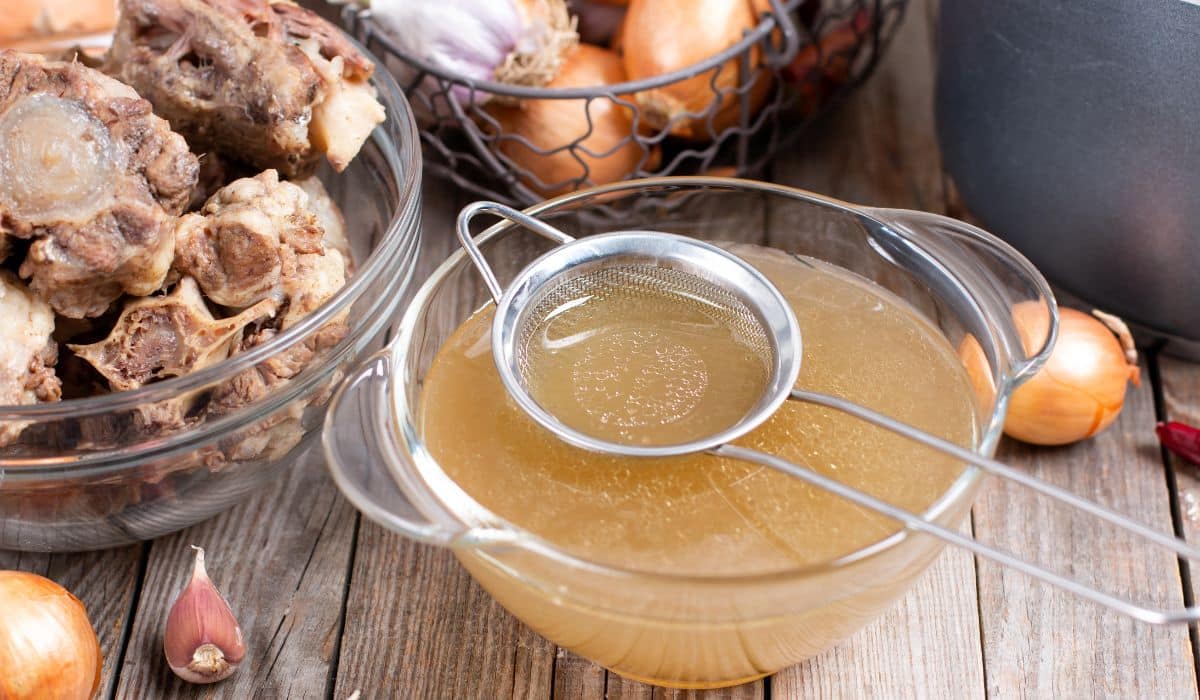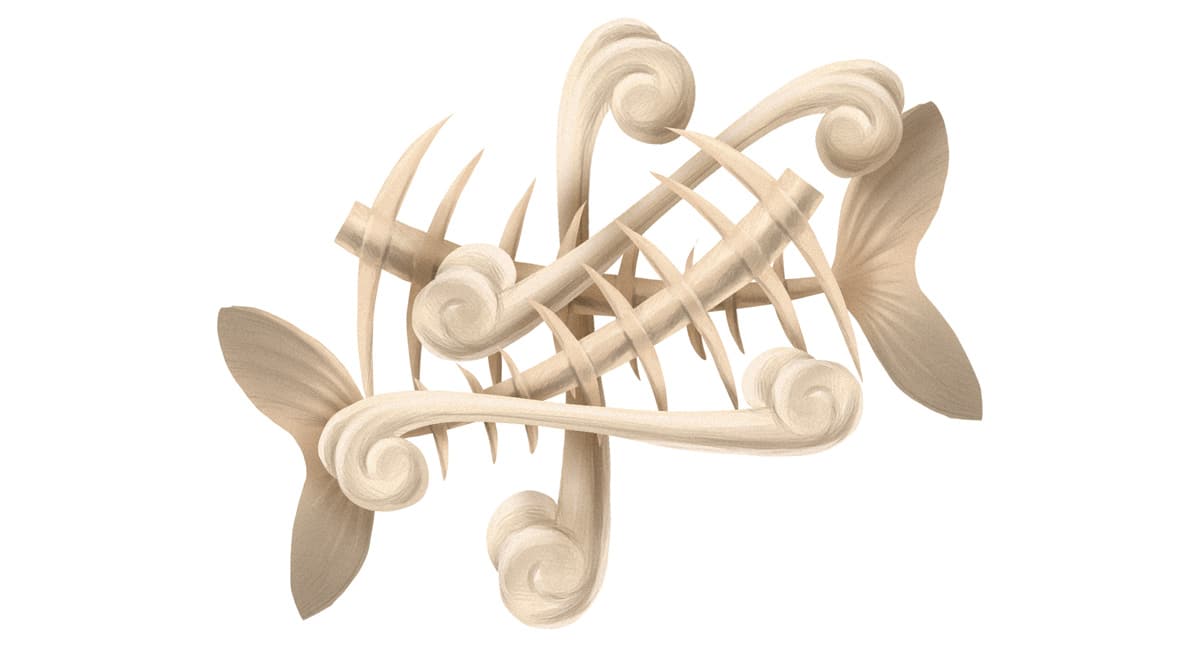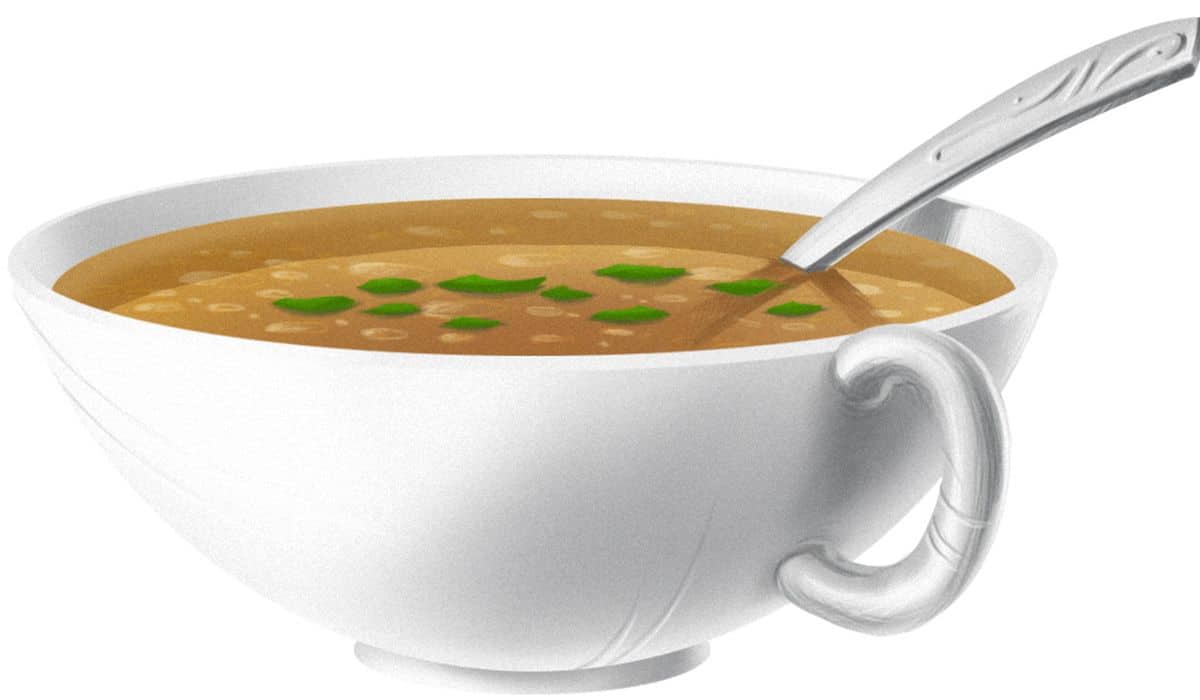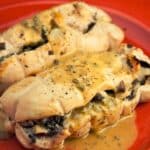
What’s In a Bone?
Looking at a bone, you might think it has nothing to offer in terms of nutrition. Lick it, and it has an unpleasantly sandpapery texture. Bite into it, and all you get is a sore tooth. It looks so dead; what kind of useful nutrients could possibly be in there?
The answer: just about everything. Bones are a perfect example of why you should never judge a book by its cover. Locked away inside that hard shell is a wealth of essential nutrients – anti-inflammatory and gut-healing proteins, healthy fats, and a wealth of minerals just waiting to be used. Wild animals the world over know this: they’ll go straight for the bones every time they make a kill. Unlike dogs or vultures, though, human beings aren’t built to crack open the bones with our bare teeth. Instead, we have to make our oversized primate brains earn their keep by cooking the bones to get at the goodness inside.
One of the easiest ways to do this is by making bone broth. The recipe is so simple a child could do it. First, get yourself some bones. Any kind of odds and ends of the animal will do: feet, heads, necks and backs, knuckles, or tails are all perfectly good. Sometimes you can even get these parts from a butcher or farmer for free, or deeply discounted as “pet food.” Leftovers from your last meal are also fine. Throw them all in a pot or slow-cooker, cover with water, turn the heat on low, and come back 6-48 hours later for your broth. Seasonings and garnishes are optional if you like them; throw in whatever tastes good to you.
The resulting stock will have a clear, rich color ranging from translucent (fish bones) to golden-yellow (chicken bones) to deep brown (ruminant bones). If you added vegetables, this may affect the color as well; for example, beets will turn it red. After a few hours in the fridge, the broth will congeal into the consistency of Jell-O: that’s a sign you’ve done it right. A layer of fat will rise to the top of the broth; if you’re using bones from healthy animals, there’s no reason not to enjoy this, but if you’re stuck with grocery-store bones, just wait until the stock has congealed and the hardened fat will be easy to scrape off.
Bone broth tastes amazing as a base for soups or stews (you’ll never be tempted by grocery-store broth again), but what’s really remarkable about it is its incredible health benefits.
Benefits of Bone Broth: Joint Health
The advice to “eat what ails you” sounds like a silly piece of folklore in an era of modern medicine, but in this case all our sophisticated modern analysis actually proves the old wives’ tale true. Broth made from bones and joints contains several nutrients that help strengthen your own skeletal system.
First up to bat are the proteins. Yes, bones have protein. In fact, they’re close to 50% protein by volume, and that number goes up once you factor in all the connective tissue that’s usually attached to them. Collagen, the protein matrix in bones, tendons, ligaments, and other flexible tissues, is broken down during the cooking process into another protein called gelatin. Gelatin is the reason properly prepared broth congeals in the fridge (it’s also the active ingredient in Jell-O dessert, gummy candies, and marshmallows). Unlike many other animal proteins, gelatin is not a complete protein (it doesn’t contain all the essential amino acids), but it does contain several very important “non-essential” ones, especially proline and glycine.
These proteins perform a variety of crucial functions. First of all, they give your body the raw materials to rebuild your own connective tissue, especially tendons (which connect muscles to bones) and ligaments (which connect bones to each other). It’s hard to overestimate how important this connective tissue is for overall health and strength. Professional powerlifters know that their bodies are only as strong as their weakest link: bulging muscles are useless if their tendons and ligaments are underdeveloped. And injury to these crucial tissues doesn’t just stall your deadlift progression. Think of tendonitis, or the overall “aching joints” that seem to accumulate with age. Definitely symptoms we all want to reduce or avoid if at all possible.
As well as providing the raw materials for healthy bones and joints, the proteins in bone broth deliver an especially interesting benefit for rheumatoid arthritis, a chronic autoimmune disease marked by painful damage to the tendons and ligaments. Specifically, these proteins may actually help stop the autoimmune response in its tracks. One study found that chicken collagen dramatically improved symptoms in 60 patients; four of them showed complete remission.
Another benefit of bone broth for joint health comes from glycosaminoglycans (GAGs), a family of carbohydrates found in bones and connective tissue that show interesting effects in reducing joint pain. One of these GAGs, hyaluronic acid, is an effective treatment for osteoarthritis: it’s been mostly studied as an injection, but there’s also evidence that it’s useful when taken by mouth. Chondroitin sulfate is another GAG that has performed well in reducing the pain and damage of arthritis in several studies.
The best-known GAG is glucosamine, which thousands of people take as a joint health supplement. Interestingly enough, the studies evaluating glucosamine + chondroitin supplements have produced conflicting and inconclusive results, and there seems to be a significant bias introduced by industry funding. However, one study compared glucosamine + chondroitin to plain collagen and found that the collagen was actually more effective, indicating that there might be something in the whole food that the supplements miss.
Whether it’s from the GAGs or the proteins, or the combination of all of them, the evidence is in: bone broth is a valuable supplemental food for all of us, and a delicious potential therapy for joint diseases. Especially if you play sports that put stress on your joints (anything where you have to run or jump on concrete, like basketball or jogging), your knees will thank you for adding a big mug of broth to your recovery routine.

Benefits of Bone Broth: Digestion
Nature rarely seems to make foods that are healthy for only one reason, and bone broth is no exception. As well as keeping your knees free from disturbing crunchy noises every time you move, it also helps improve digestion in a variety of ways.
Glycine, for example, is useful because it stimulates the production of stomach acid. To judge from the billions of dollars Americans spend on antacids every year, you might think that this is the last thing we need, but in fact acid reflux may actually be a problem of too little stomach acid, not too much. For the full story, see this series; the short version is that a stomach acid deficiency leaves your food sitting there in your stomach, half-digested, and the pressure from your stomach being so full can force acid up into the esophagus.
By prompting your body to secrete more stomach acid, glycine can help prevent or treat this painful and potentially dangerous problem. This makes bone broth a delicious supplemental food for anyone suffering from acid reflux, IBS, or FODMAPS intolerance.
Adding to its metabolic virtues, glycine is also an important component of bile acid, which is necessary for fat digestion in the small intestine, and also helps maintain healthy blood cholesterol levels. Especially for people who are new to Paleo and switching from a carb-based to a fat-based diet, this has the potential to keep the digestive process running a lot more smoothly.
Glycine isn’t the only useful protein for gut health, either. Glutamine, another amino acid found in bone broth, is a natural remedy for “leaky gut,” that unpleasant and dangerous condition where the barrier between your gut and the rest of your body isn’t working properly, allowing molecules that should stay inside the gut to cross over into the bloodstream and potentially set of a cascade of autoimmune reactions. Glutamine helps maintain the function of the intestinal wall, preventing this damage from occurring.
Benefits of Bone Broth: Detox
Glycine also helps in detoxification – the actually meaningful kind, not the ridiculous nonsense about unspecified “toxins” and the necessity of removing them by embarking on long fasts or juice cleanses. None of those special cleanses are necessary, because your body has its own detox system: your liver. Glycine gives the liver a hand up in removing anything dangerous from the body – for example, in one rat study, rats fed glycine showed significant improvements in recovery from alcohol-induced fatty liver disease compared to rats that weren’t.
Glycine is also necessary for the synthesis of glutathione and uric acid, the body’s most important endogenous antioxidants. As described in the article on antioxidants, boosting production of the endogenous (internally produced) antioxidants is much more useful for reducing oxidative stress than taking Vitamin C or other antioxidant supplements.
Yet another detox-related benefit is that glycine helps clear out excess methionine, another amino acid found in large quantities in eggs and muscle meat. Methionine is an essential amino acid, but too much of it can raise blood levels of another amino acid called homocysteine, and the process of breaking down homocysteine increases the body’s need for B vitamins (thus increasing the risk of B vitamin deficiency even if your intake is adequate). Glycine from broths and cartilage can help break down homocysteine without the need for B vitamins. This is a perfect example of the wisdom of traditional cultures in eating every part of the animal: the proteins in the muscle meat and the proteins in the connective tissue balance each other out for optimal nutrition.
Benefits of Bone Broth: Marrow
Any kind of broth is nutritious, but broth made with marrow bones is especially beneficial because you get all the good stuff in the marrow as well as the good stuff in the bones themselves. Marrow is what the animals really go after when they’re tearing through the bones of a dead animal: vultures will even fly up holding the bones and drop them to smash on the rocks, and then swoop down to slurp up the delicious interior.
The vultures are onto something good: bone marrow is criminally delicious. It’s commonly touted as extremely nutritious as well – and it probably is, given that it’s an organ meat and organ meats in general tend to have an excellent nutritional profile. Bone marrow is an essential part of the immune system, and contains all kinds of cells necessary for immune function and bone growth. Unfortunately, there hasn’t been a conclusive nutritional analysis of it yet because so few people are interested in eating it. We do know that it’s loaded with monounsaturated fat, and Dr. Weston A. Price reported many traditional cultures who viewed it as a sacred food for fertility nutrition; more information than that will unfortunately have to wait until a more complete nutritional analysis is available.
Benefits of Bone Broth: Minerals
Aside from the benefits of all the proteins and sugars, and whatever nutrients might be hiding in the marrow, bone broth is extremely high in minerals. Bones from land animals are rich in calcium, magnesium, potassium, and phosphorus, and fish bones also contain iodine. We know that at least some of this mineral content leaches out into the water, because the bones are crumbly and demineralized when the broth is done cooking – often they’re so weak that they’ll fall apart if you put any pressure on them. If you use smaller bones, like chicken or fish, they’ll sometimes even entirely dissolve into the stock.
Unfortunately, it’s impossible to get a precise estimate of exactly how much of these minerals is contained in the broth because every batch of bones is so different. The nutritional content of the broth will depend heavily on how the animal was treated, what its diet was like, how many bones were used, whether there was any meat left on them, what part of the animal the bones were from, how long they were cooked, and at what temperature. In short, it’s impossible to give you an easy list of “bone broth nutrition information.”
That said, there are a few ways to maximize the mineral content. The easiest is to just add a few tablespoons of something acidic (apple cider vinegar is a favorite) to the broth before you turn on the heat. If you’ve ever put an egg into a glass of vinegar, you’ve seen this in action: the shell is made of calcium carbonate, so it fizzles away and dissolves, leaving the egg held together by nothing but the membrane.
Another simple way to get the most nutrition from your broth is to just eat the bones. After cooking for so long, small bones aren’t hard at all; they have a texture that’s just a little harder than crunchy nut butter. If you can’t handle them straight, another option is to grind them up in a blender and take them like a supplement (you can buy empty gelatin capsules online to fill with this bone meal if you really hate the taste or texture).
Benefits of Bone Broth: Other Benefits
As well as the major benefits above, there’s also a grab-bag of miscellaneous other reasons to get your broth in. In general, all the proteins in bone broth are strongly anti-inflammatory. This may actually be why some of them are so helpful in treating osteoarthritis (an inflammatory autoimmune disease), leaky gut (an inflammatory precursor to autoimmune diseases), and other chronic inflammatory conditions like joint pain or fatty liver disease.
Another interesting anti-inflammatory benefit of the proteins in bone broth is more rapid recovery from injury. Under the stress of an injury or disease, the body’s needs for these amino acids increases – that’s why many of them are considered “conditionally essential” even though technically they aren’t required in the diet because it’s possible to synthesize them from other sources. During periods of increased physical demands or stress, the body needs more of these amino acids than it can produce, so they do become “essential,” and getting more of them can speed recovery.
The most notable examples of this are arginine and glutamine, both found in bone broth. Supplemental dietary arginine helps speed wound healing by supporting the formation of collagen. This may be through conversion to proline (although supplemental proline does not have the same effect) or through some other pathway. Glutamine also helps reduce healing time in hospital patients, and recovery time in athletes on an intense training regimen.
Another fringe benefit of broth is that glycine is an inhibitory neurotransmitter, meaning that it helps you relax. One trial found that glycine supplements also improved sleep quality and reduced daytime sleepiness. So a hot mug of bone broth might be just the ticket to wind down after a long day.
On a more superficial level, the amino acids in gelatin also improve the appearance of your skin and hair. Skin, just like gelatin, is made of collagen. Gelatin-rich broths help build connective tissue, which makes skin smoother (less cellulite, fewer wrinkles) and healthier. There’s also some evidence that it helps reduce the signs of aging, but be wary when you’re digging through the evidence: a lot of the research into this is funded by industry sponsors, so it isn’t terribly trustworthy.
Dangers of Bone Broth: Microwaves and Lead Poisoning
With any new food, it’s important to not only ask “what are the pros?” but also “What are the cons?”. After all, getting all your information from one side of a debate isn’t the path to a balanced opinion. When it comes to bone broth, the two major arguments on the “con” side are that microwaving denatures the proteins, and that broth contains concentrated levels of lead (a toxic heavy metal) as well as beneficial minerals.
Regarding the microwave, there just doesn’t seem to be much in the way of conclusive evidence either way. The argument is that proline, one of the amino acids in the broth, is denatured from one form to another form (specifically, from L-proline to D-proline), and that the D-proline form is toxic.
First of all, there are no studies in which the researchers actually microwaved bone broth, much less fed the microwaved broth to humans. There are plenty of studies showing that if you inject either form of proline into a chicken with a syringe, the chicken will suffer various health problems up to and including convulsions and death. One study also found that the L-proline in milk is converted to D-proline by microwaving, but the only evidence the authors presented for the proof of toxicity was a study about injecting chickens, and they only concluded that further research was needed. But humans are not chickens and we aren’t injecting ourselves with any kind of bone broth anyway, so this is not terribly convincing evidence of danger.
In any event, this isn’t really a point against bone broth per se. If you’re truly concerned about microwaves despite the relative lack of evidence, the solution is simple: just re-heat your bone broth in a pot on the stove.
Moving on to the lead toxicity issue, this one is from a very recent study that found much higher levels of lead in chicken bone broth compared to plain tap water cooked using the same process. In response, Chris Kresser points out that the levels even in the most lead-heavy broth were still below the EPA’s threshold of concern, and that the other minerals in bone broth can mitigate the effect of lead toxicity.
For an even more exhaustive examination, the Weston A. Price foundation conducted an extensive review of the study, the chickens, the cooking methods (down to the type of water and materials in the pots and pans), the researchers and institution involved, and any other factors that might be even tangentially relevant, and concluded that the lead levels in the broth were likely to result from an unusually polluted environment. They then presented data from a known local farm, which found no lead in chicken or beef broth.
It’s important that neither of these studies is terribly conclusive: both tested only one farm’s birds, a sample size that’s far too small to generalize from. Of course, if there really is lead in bone broth, it’s a serious concern, but at the moment, there’s just not enough evidence to conclude anything either way. It really ends up being a risk everyone has to decide to run or not to run, in view of the potential benefits of the broth and their confidence in their local bone supply.
Ways to Eat Bone Broth

Drinking bone broth by itself is a treat for people who love it, but not everyone is thrilled by the texture and mouthfeel of such a fatty liquid. And sometimes, it just isn’t convenient to have a big bowl of bone broth at the table (when it’s 100 degrees out, for example, the last thing anyone wants is a hot bowl of broth). So a few ways to add bone broth to other foods are a useful addition to any Paleo chef’s repertoire.
The very easiest method is to simply use the broth as the basis for soup. In fact, you can get the soup started at the same time, by using bones with meat still on them. Chicken necks and backs, for example, yield a rich, fatty, and delicious chicken soup. Cook them like any other broth bones, and gently break them up with a fork when the broth is done: they’ll fall right apart. You can take out the bones if you like, or just leave them in; they’re soft enough to eat comfortably. Add some vegetables if you like a thicker soup, and serve hot.
Another traditional way to get your broth in is by making sauces or gravies. You’ve probably already made a simple reduction sauce with chicken broth; it’s simple enough to substitute bone broth and use the same technique.
If you’re getting adventurous or want to impress, you could also try aspic. Familiar to every fan of Julia Child, aspic is a clear, almost flavorless jelly used to dress up anything that goes well with a savory flavor. The basic technique is to pour the stock, sometimes along with an additional packet of unflavored gelatin, into a mold of your choice (this can be as simple as a mug or loaf pan). Then add whatever other ingredients you’d like to set in the aspic (eggs, meat, or vegetables), and then let the whole affair chill in the fridge until it’s set. Done wrong, this is reminiscent of the worst culinary experiments from the 50s, but done right, it can be a beautiful and interesting centerpiece or side dish – and it’s eaten cold, so it’s perfect for a hot summer day.
Substitutes for Bone Broth
There really aren’t any substitutes that come close to the real thing, but if you want some of the nutritive value of bone broth while you’re travelling or stuck without a kitchen, you can buy unflavored gelatin powder from grocery stores or online. This is just the protein, with no nutrients or fat, but since the benefits of the amino acids alone are quite substantial, it’s worth looking into as a temporary fix to tide you over.
Gelatin powder can simply be stirred into any liquid you like; take it straight in water, or hide it in soups and smoothies. For children (or adults) who refuse to drink their broth, you can also use unflavored gelatin to make homemade jelly candies or desserts.
Conclusion
The old song – “Dem bones, dem bones, dry bones” – really got it all wrong. Bones aren’t dry at all; prepared properly, they’re one of the most nutrient-dense foods you can eat. And the price is right, too: think of how many bones we all throw out every week. Using those bones saves you a considerable amount of money, because it stretches a leg of lamb or a roasting chicken into not one, but two high-quality sources of protein and fat. All the gristly, unattractive odd bits get a new way to be useful, and you save significantly on the grocery bill: drink up!





Leave a Reply